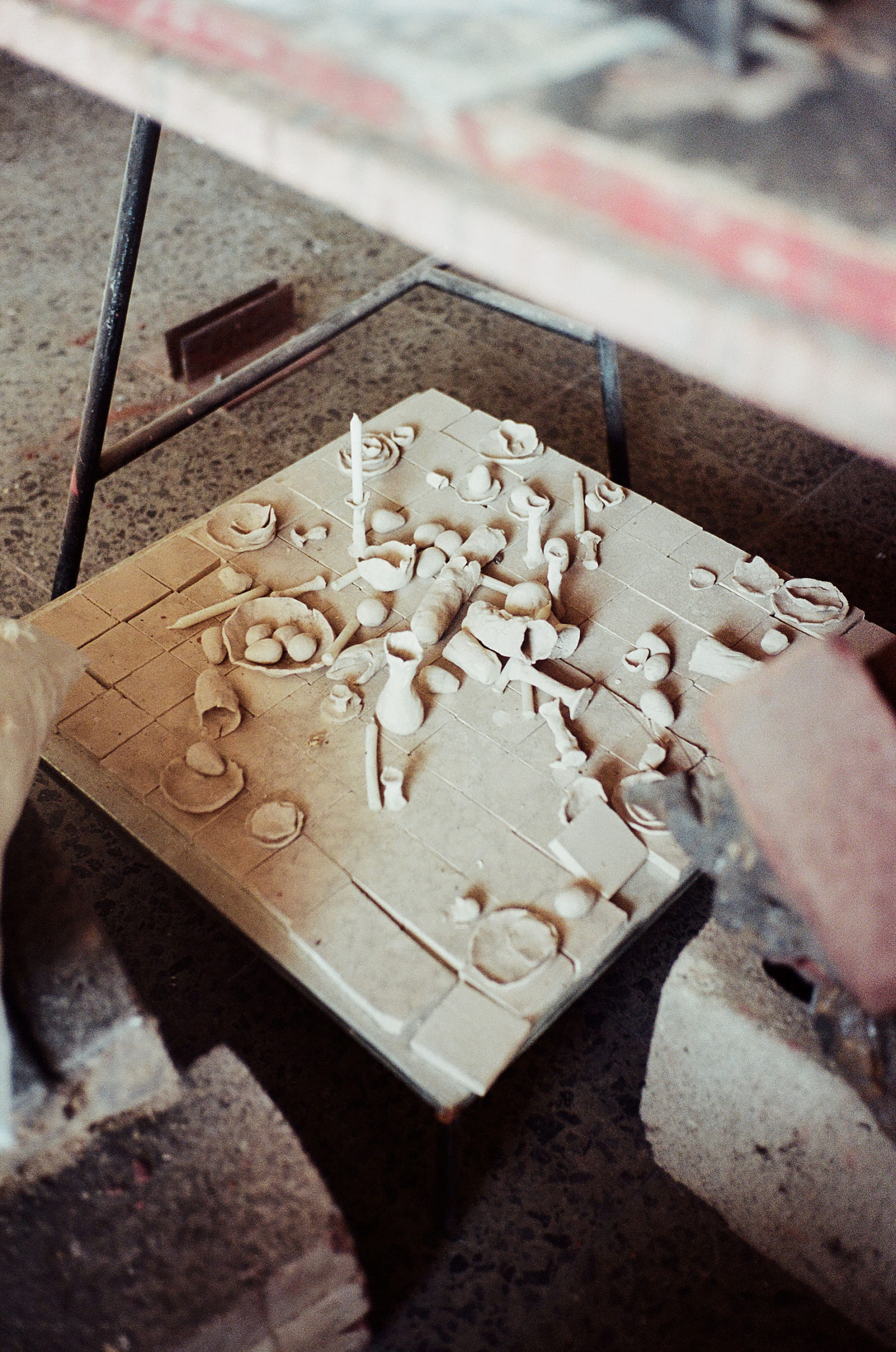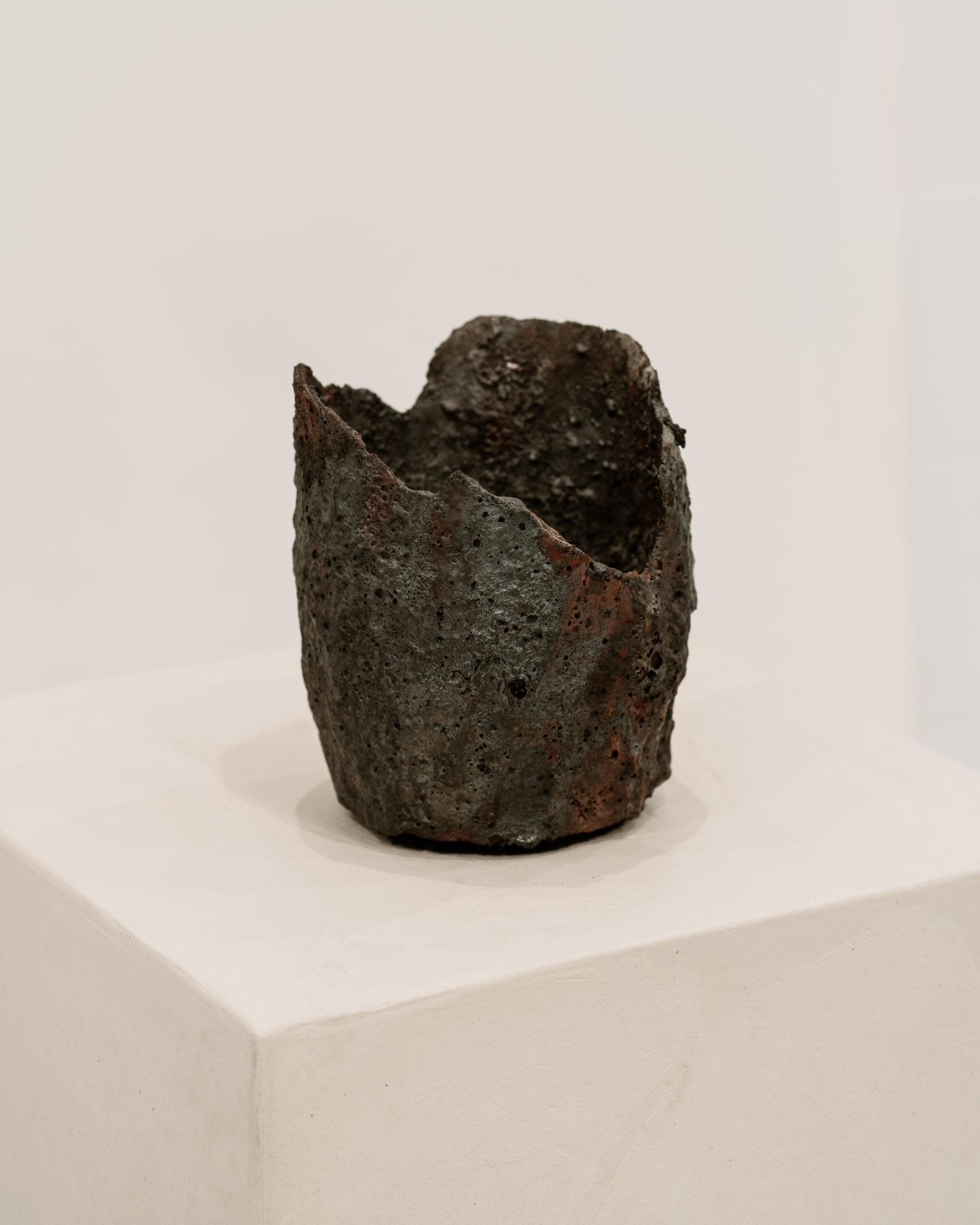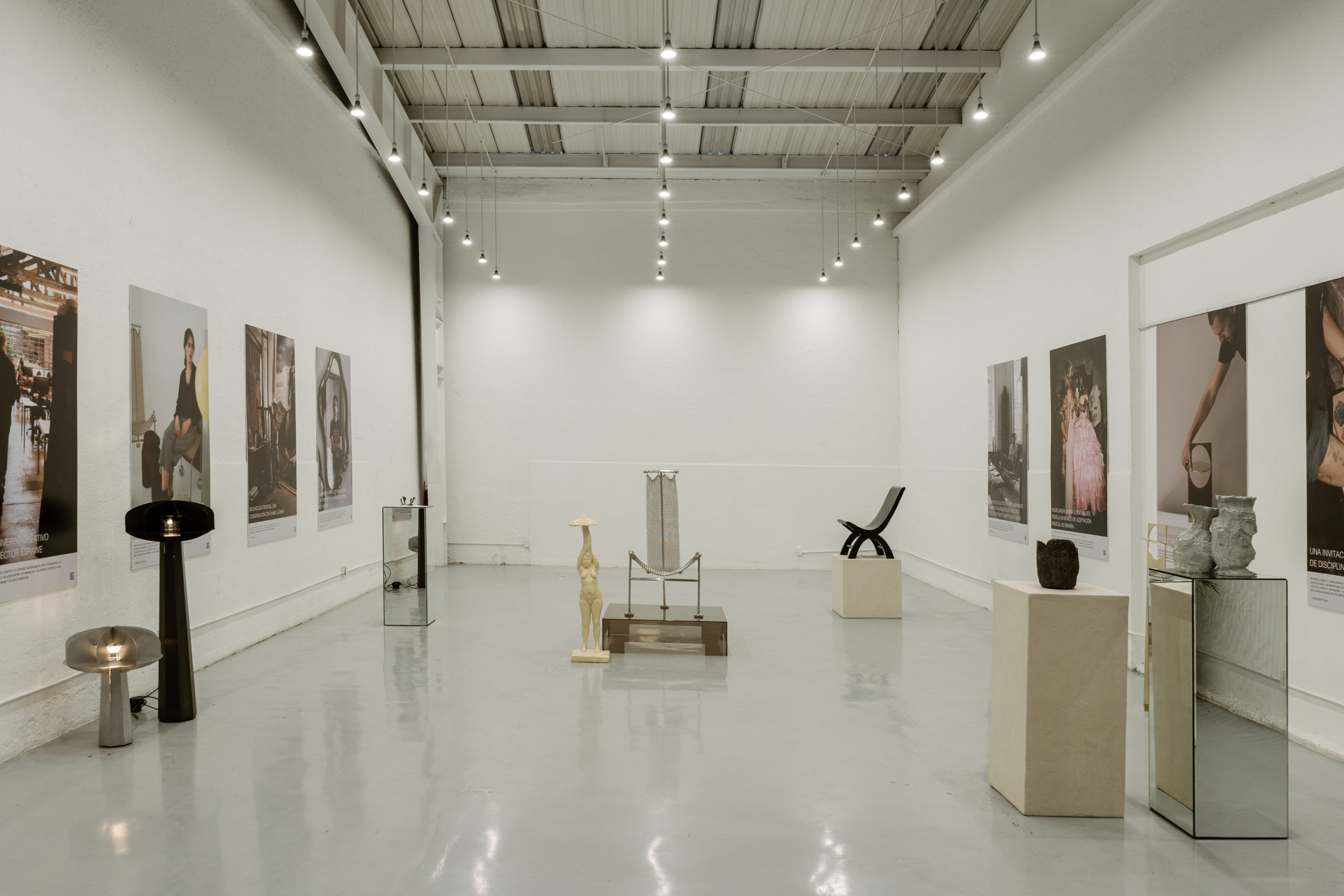THE TACTILE WORLD OF DISCIPLINA STUDIO
Disciplina Studio Vessels on exhibition at MATERIA Contexto
December 9, 2021, LOOT Gallery 7-11pm, CDMX

Disciplina Studio is a México City based multidisciplinary practice channeling free exploration of design with utilitarian purpose. Focusing on ceramics and furniture design, the studio takes advantage of the abundance of cultural and material richness, working with obsidian, low temperature clay, and acids on metal. Their focus on craftsmanship and developing new techniques from common materials leaves room for spontaneity in forms and silhouettes that not only reinvent the creative process but the end result.
The founder was raised in the south of México City where he spent his childhood traveling throughout the country coming in contact with a variety of artisan handcrafts and techniques specific to each region. ‘I decided to study architecture as it seemed to be the only valid option for anyone with creative interests in my environment.’ Architecture became a channel that brought him closer to other disciplines, inspiring him to transition into art and design. Disciplina Studio is located in the neighborhood of Colonia Buenos Aires in central México City. The space is stacked and scattered with collections of samples and materials, a catalog of labor and experimentation. It’s a dusty, busy workspace that the artist navigates with ease.
MATERIA spent an afternoon at Disciplina Studio to discuss their perspective on materials, culture and to explore their tactile approach.

MATERIA: How would you define Disciplina Studio in three words?
DISCIPLINA STUDIO: Rough, sophisticated, handcrafted.
MATERIA: What is inspiring Disciplina Studio right now? And how do these influences show up in your life and subsequently your work?
My environment is always the source of inspiration. I believe that in latitudes like this there is a great cultural and material richness. Very different from what can be found in more developed countries. I am not only referring to a historical background. There is a particular freedom and vision of doing things that is latent and present everywhere.
In México, due to socio-economic conditions, it is very easy to have access to many artisanal or semi-industrial processes that are not very specialized. The aesthetic qualities and spontaneous results from error nourish our context in an enriching way.
For me, instead of being a disadvantage, I find this to be a source of inspiration. The search for me is to appreciate, re-evaluate and incorporate traditional or accessible techniques or methods from a particular vision.


MATERIA: Are there any references that contribute to your studio’s creative narrative?
DS: All the craft traditions in México or anywhere in the world drives me crazy and interests me a lot. Both from ancient times and nowadays. They are always traditions that are kept alive.
MATERIA: What are your thoughts on art, design and culture in México at this moment?
DS: In art there are many interesting voices, some in design, few in architecture. I think a lot has to do with a relatively recent process of valuing our own identity and personality as creative agents living and working in México. On the side of the creators, I feel that within México there is a solid and sophisticated community unlike the counterpart of the market and national demand.
In architecture there are super valuable and interesting things in terms of vernacular or popular architecture—as well as in the field of social and participatory architecture. Apart from this, I believe that contemporary architecture in México is taken by the ‘starchitect’ culture or focused on real estate development. From my personal point of view both are uninteresting and quite questionable visions.


MATERIA: We’re seeing a lot of sculptural silhouettes, experimental materials, and distinct textures in functional art and collectable design. How does Disciplina fit into these themes?
DS: I guess my approach as a studio discipline, as opposed to other studios. It focuses on craftsmanship and developing new techniques or processes from common materials.
MATERIA: What materials are you currently exploring in your work?
DS: Obsidian, low temperature clay, pyrite, acerine, acids on metal, silicon carbide, flax and electrolytic baths.
MATERIA: Where do you source your materials?
DS: From anywhere. By using common materials it is easy to access them. It gets complicated when developing specialized techniques that require parts of the process that don’t exist because no one has ever done them before. In ceramics sometimes materials are found along the road during travels.
MATERIA: What’s the biggest lesson learned in running your own studio?
DS: Disciplina Studio focuses on personal explorations and a way of doing design away from mass production. The most complicated learning process has been to find a market niche that values and understands that unique pieces or limited editions have for many reasons a different value and price.

MATERIA: You were an artist in residence at Casa Wabi 2020. Can you share more about your experience and what artists should consider when undertaking a residency?
DS: The experience was beautiful, it is a paradise. My stay in that residence brought me even closer to the use of low temperature clay, which I have incorporated much more in my practice since then. It depends on the residency, there are many types and approaches. It is always good to get out of the routine. In any residency there is a professional and a personal part to take into account.
MATERIA: What was the most unexpected learning that came out of your residency(s)?
DS: Be practical. In my workshop in México City, I have every kind of tool and material available. Being in a residence in another country or city you have to function with what’s available to you.
MATERIA: What are some rituals in your practice or personal life that help keep you grounded and inspired?
DS: I don’t know if there is a specific ritual that helps with inspiration. Reading, walking and not looking at social media always takes my mind off any constant thoughts. That moment when my head looks elsewhere helps me connect ideas.








